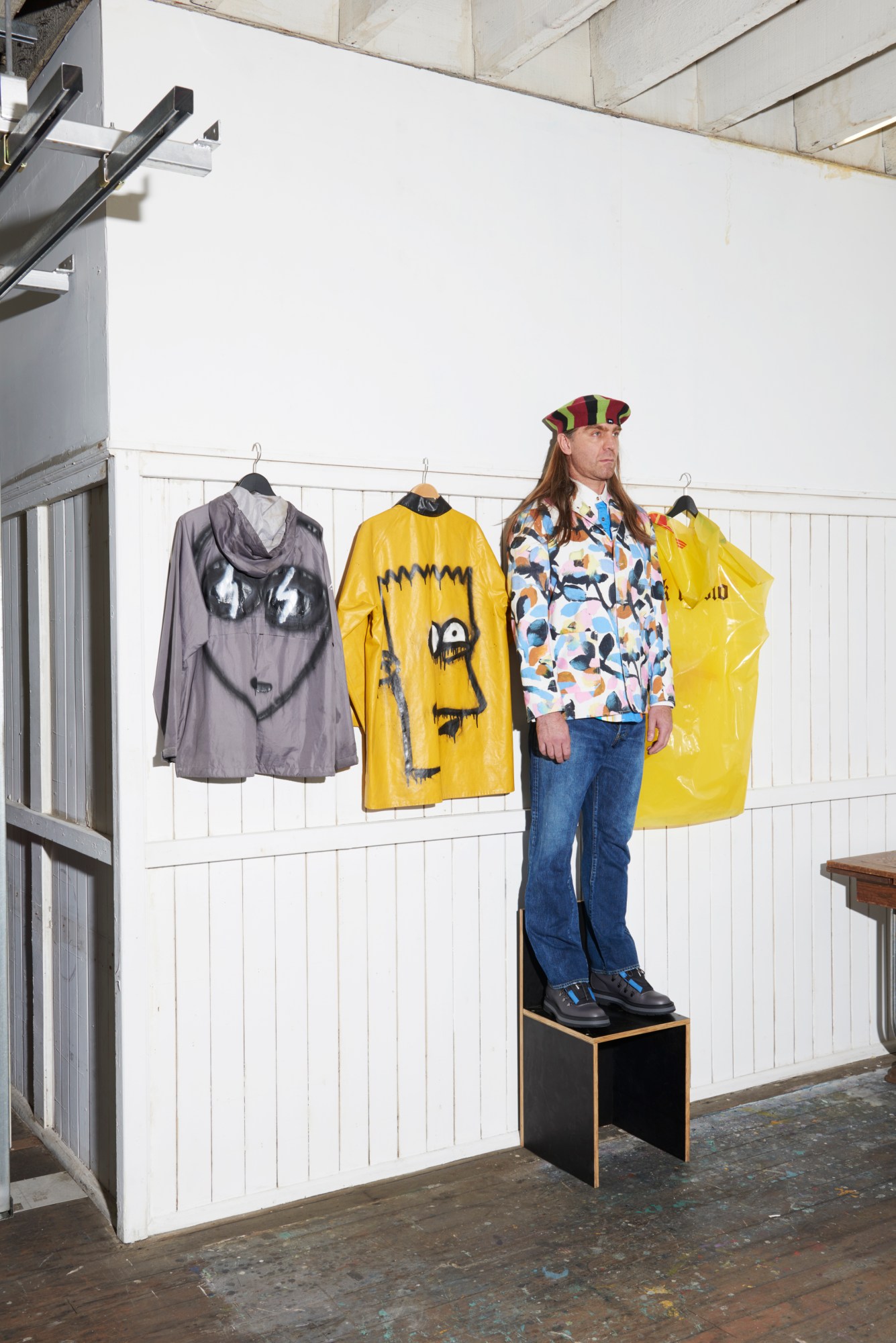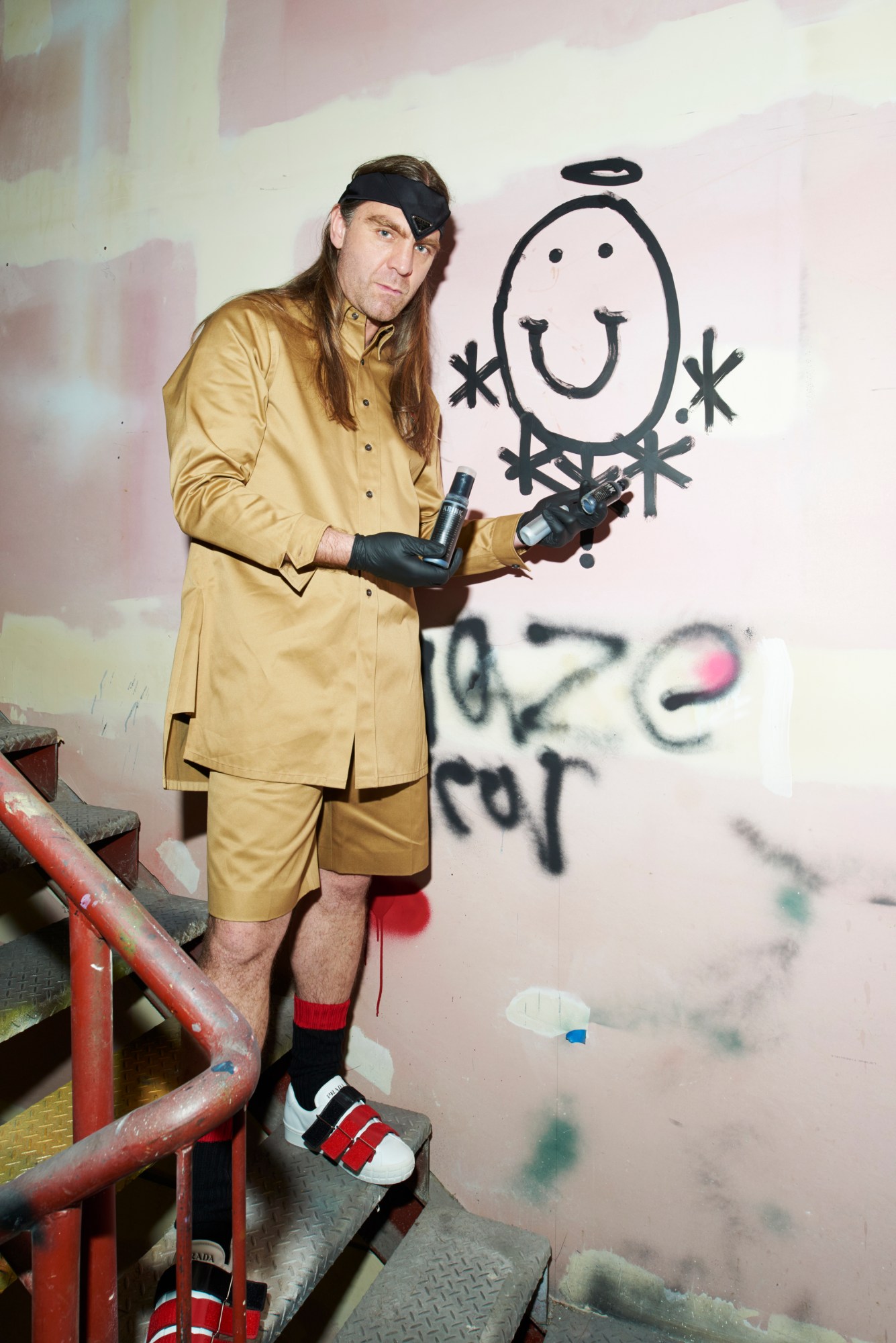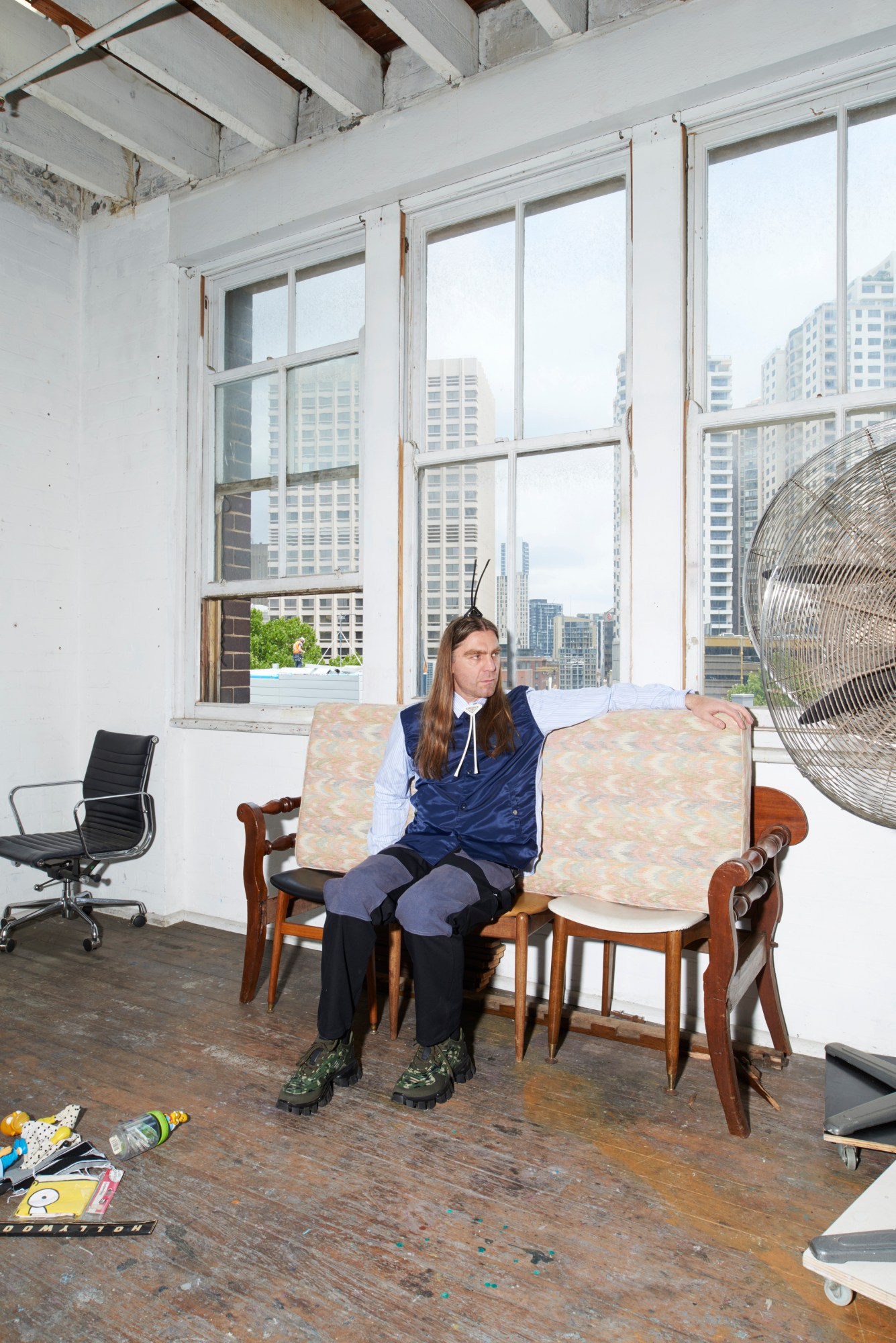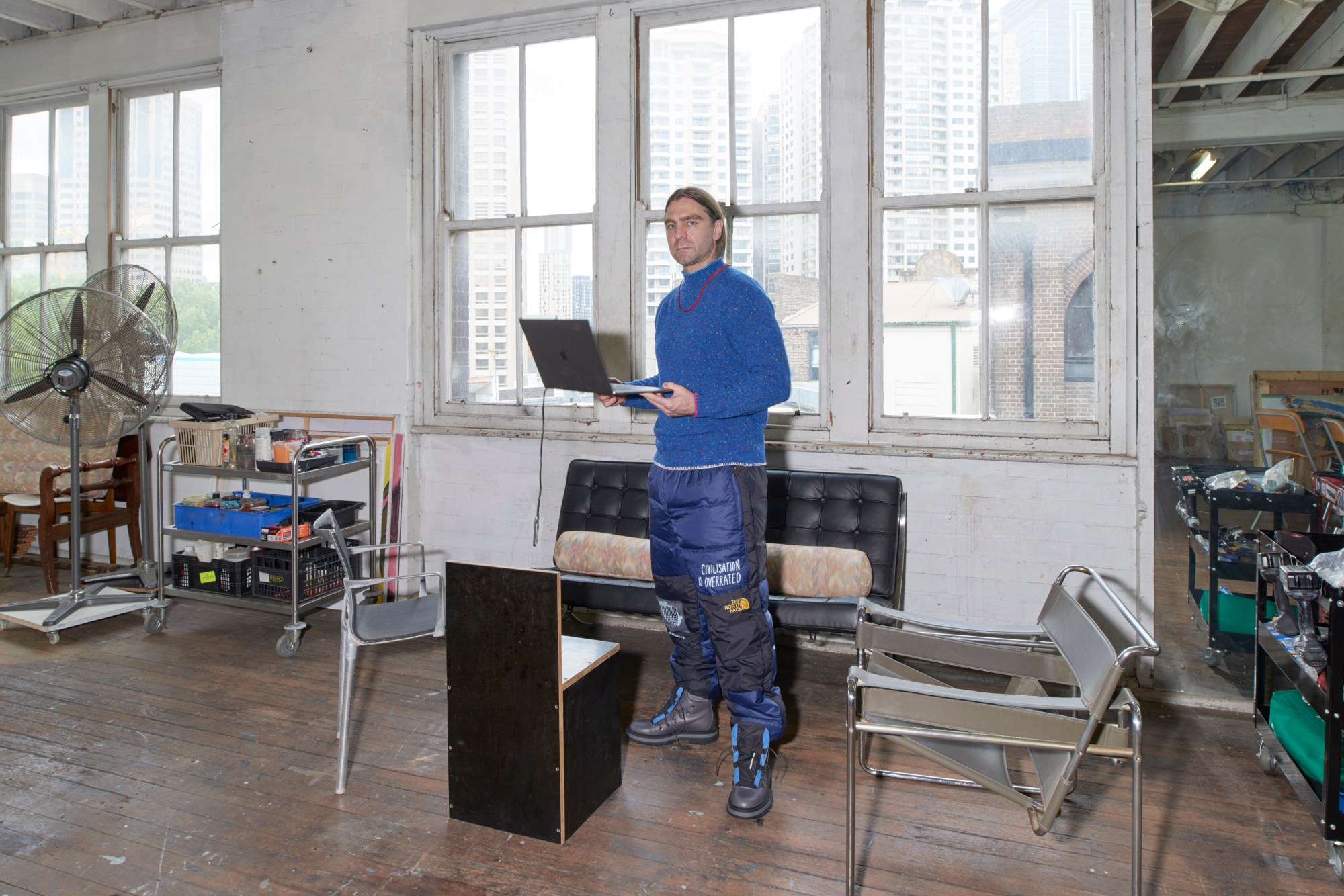For the past 15 years Edward Woodley has been the leader behind beloved and acclaimed Sydney art gallery China Heights. A Sydney native, he discovered the first China Heights location back in 2002 while attending warehouse parties in the Surry Hills space. Those same parties led to the formation of a creative group of friends that banded together to create the gallery. Its focus is to work with represented artists on monthly exhibitions and to create a space that removes the exclusivity of the art world, welcoming anyone who’s interested. Over the years China Heights has become a home base for established artists like Max Berry, Otis Hope Carey, Stanislava Pinchuk and Gabriella Lo Presti, as well as a nurturing place where emerging artists can build careers.
Edward’s passion for curation and developing artists grew out of his own art practice. His interest across all categories of art and openness to new technologies and mediums means his work is always unexpected. Function and purpose are core to the energy in Edward’s varied work, his most recent joint exhibition ‘Disruptive Pattern Material’ with local artist Aedan Lee saw Edward create chairs from repurposed Bundeswehr disposal tarp and chrome plated steel. Just prior to the 15 year anniversary of China Heights, we caught up with Edward in his Sydney studio to reflect on his career as an artist and as an advocate for the local art scene.

You seem to have a number of roles and practices, how would you define what you do?
I had a neighbour who built road cases for photographic and musical equipment, so throughout high school and also when studying design, as my weekend job, I would build these cases. At the time I didn’t see it as being creative at all — I was given this plan and I had to build this specific thing — but it was actually teaching me the practical application of creativity, not just expressive art but how you can build an object which has purpose. So through that and study and everything I was exposed to in life, I became really familiar with objects and it wasn’t until I finished studying that I realised it was all kind of interlocked. And then that informed my ongoing practice as… I wouldn’t call myself an artist, but somebody with a creative output.
What kind of art are you interested in? As both a viewer and a creator?
I wouldn’t be so narrow minded [to have] a single focus, as a general appeal I’ll look at everything. I’m interested in highly functional, practical art to the point where it may not even be recognised as art anymore, which I really find fascinating — that blurry line. I’m equally interested in creating something that has a visually familiar language, which may not be immediately distinguishable or identifiable.

How do you feel about the art being created at the moment, broadly, and that being created by the artists in your shows?
Being involved in this long enough now, you really start to see cycles. That relates to anything creative, whether it be fashion or music, visual arts, and even politics — it’s just a life cycle. The art I’m seeing being created now is amazing, as much as you’re seeing things that are cyclic and things that are reoccurring, it’s like with anything, you do see ideas reappear. What I find interesting and irritating is when some things are championed but knowing that it wasn’t you — that it was made by someone else a couple of years ago. But it’s new to that audience so you can’t discredit the validity of whatever that may be.

As a curator how do you decide what is ‘good’?
The core thing with anything like that is seeing the sincerity in the work and knowing you don’t need to know anything about the artist. I think you can look at anything and see if it’s sincere. They’ve created this work because they had this burning desire to make this work, whatever the reason was to push them into that is secondary, but when you look at it you know that this person made this work. So to define what is ‘good’ is based on the sincerity of the artist.
And even if it’s something I may not hang in my house… there is an appreciation of art and liking art, which are two different things. Professionally speaking I have to look at art all day long, which is amazing, but you do see a huge variety, regardless of if you’re an experienced viewer or a first time viewer, sincerity will always come first and ring out. I think you’ll always be attracted to something genuine.
You’re somewhat of a mentor to emerging artists, what is your best advice for them?
Utilise any access to resources and materials that you have within your immediate vicinity. Don’t rely too heavily on having the ‘best’ types of paint, paper, tools. Just use what you’ve got and through repetition you will see development in your work. You need to document everything and put it out into the world, photograph and record everything you do, make journals or whatever — you don’t have to share them. Document everything and be aware of what other people are doing but don’t let it deter you from making work. Nothing is immediate, just be genuine and keep making work and in time you’ll find your audience. That’s the beauty of digital communities, whatever your art is, there is a platform and audience for it. Don’t preach to the converted, just keep making genuine work, it all comes down to that sincerity for work. And definitely don’t be held back by thinking you’re not good enough.

Credits
Photographer Andrew Cowen
Stylist Charlotte Agnew
